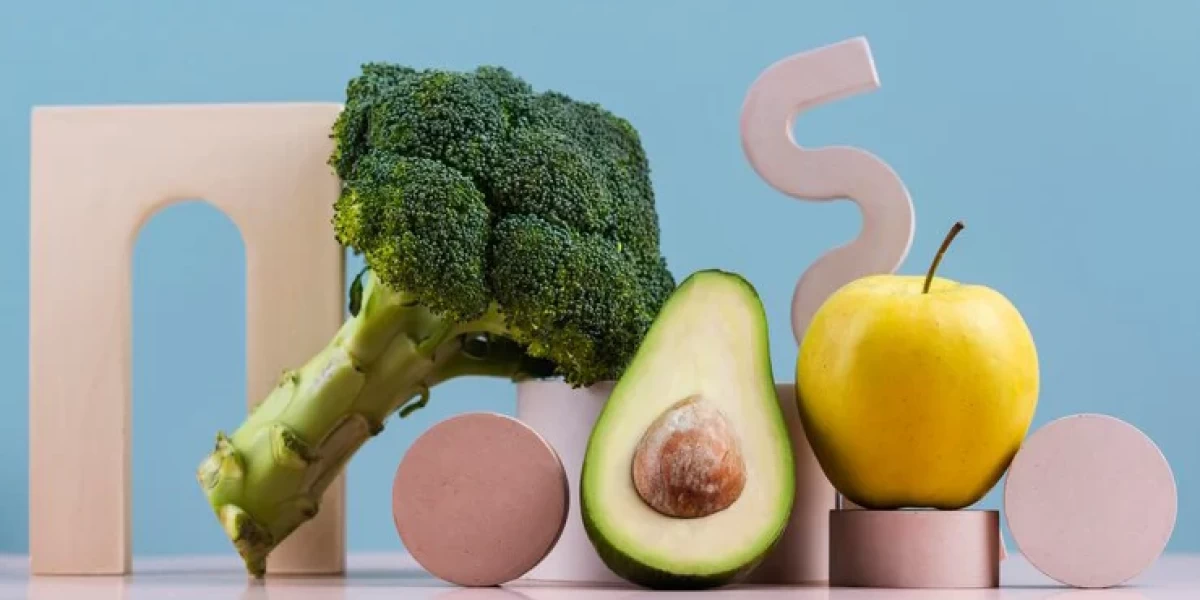Introduction
Managing Type 2 diabetes effectively often involves a combination of medication, dietary changes, and lifestyle adjustments. Ozempic, a popular medication prescribed to individuals with Type 2 diabetes, has gained attention for its dual role in blood sugar regulation and weight management. However, many people taking Ozempic are unaware of how diet impacts its effectiveness and their overall health. Understanding which foods to avoid can significantly enhance the medication’s benefits, helping users achieve better health outcomes and avoid unwanted side effects. This guide is designed to provide a clear understanding of Ozempic, how it works, and, importantly, the foods best avoided while on this medication.
- 1 What is Ozempic and Why Understanding Diet Matters: Ozempic is more than just a diabetes medication—it plays a role in how the body regulates blood sugar levels and weight. By mimicking a hormone that influences insulin secretion and appetite, Ozempic can help people with Type 2 diabetes manage their condition more effectively. However, certain foods can interfere with its effects, leading to fluctuations in blood sugar levels, digestive issues, or reduced medication effectiveness. Recognizing which foods to limit or avoid can empower Ozempic users to make healthier choices, supporting both the medication’s role and their body’s overall function. This section sheds light on the importance of dietary considerations when using Ozempic.
- 2 The Purpose of This Guide on Foods to Avoid with Ozempic: The purpose of this guide is to educate and support individuals using Ozempic on how to optimize their diet for the best possible health outcomes. By understanding which foods can negatively interact with Ozempic, users can enhance the medication’s effectiveness while minimizing any unpleasant side effects. This article will provide practical advice and guidelines to avoid common dietary pitfalls, supporting individuals in managing Type 2 diabetes with confidence and a greater sense of control over their health. Each section of this guide is dedicated to improving health outcomes through diet, empowering readers to use Ozempic more effectively by knowing what foods to avoid. Ozempic Foods to Avoid
1. What is Ozempic?
Ozempic is a medication primarily prescribed for people with Type 2 diabetes. Developed to help regulate blood sugar levels, Ozempic also supports weight management, making it a valuable tool in diabetes care. This medication works by mimicking the function of a naturally occurring hormone, GLP-1 (glucagon-like peptide-1), which affects how insulin is released in response to meals. For individuals with Type 2 diabetes, this action can reduce the frequency and intensity of blood sugar spikes, providing more stability and control over blood glucose levels.
Overview of Ozempic as a Medication
Ozempic is specifically designed to aid in the treatment of Type 2 diabetes by helping to control blood sugar levels. By increasing insulin production when blood sugar levels are high and slowing down digestion to prevent quick spikes, it plays a critical role in diabetes management. Unlike insulin injections, Ozempic is not insulin itself; instead, it stimulates the body’s natural insulin response. This aspect makes it beneficial for individuals seeking more natural blood sugar control. Additionally, Ozempic is often prescribed to support weight loss, a key factor for many people managing Type 2 diabetes, as weight reduction can significantly improve blood sugar levels and overall health outcomes.
How Ozempic Works in the Body
Ozempic works by stimulating the GLP-1 receptor in the body, which has several beneficial effects. First, it increases the secretion of insulin when blood sugar levels rise, helping to prevent hyperglycemia (high blood sugar). Second, it slows down gastric emptying, meaning that food moves more slowly from the stomach to the small intestine, resulting in a slower release of sugar into the bloodstream. This process can help prevent rapid blood sugar spikes after meals. Finally, Ozempic influences the brain’s appetite centers, which can lead to reduced hunger and potential weight loss. These combined actions make Ozempic an effective treatment option for people with Type 2 diabetes, but they also mean that certain foods—particularly those high in sugar or refined carbohydrates—can undermine its effectiveness and should be avoided for optimal results. Ozempic Foods to Avoid
2. Who is Ozempic For?
Ozempic is a prescription medication primarily intended for people with type 2 diabetes. It belongs to a class of drugs called GLP-1 receptor agonists, which work by stimulating insulin production and improving blood sugar control. Ozempic is designed for adults who have not been able to manage their blood glucose levels adequately through diet, exercise, and other medications. While its primary function is blood sugar regulation, Ozempic has also been shown to help patients achieve weight loss, making it an appealing option for those managing both type 2 diabetes and obesity. The FDA has approved it for type 2 diabetes treatment, but healthcare providers may consider it for other situations as well. Patients often turn to Ozempic as it can simplify their management routines, but it is critical to consult with a medical professional before beginning treatment. Ozempic is not meant for type 1 diabetes or as a substitute for insulin.

Approved Uses for Ozempic
Ozempic is FDA-approved to help control blood sugar levels in adults with type 2 diabetes. This medication works by mimicking a hormone in the body known as GLP-1, which helps to regulate insulin production, slow digestion, and reduce appetite. These combined effects help patients achieve more stable blood glucose levels and, in some cases, support weight loss as a beneficial side effect. Additionally, Ozempic has been shown to reduce the risk of serious cardiovascular events, such as heart attacks and strokes, in people with type 2 diabetes and preexisting heart disease. This makes it an appealing choice for individuals with both diabetes and cardiovascular risk factors. It’s important to note that Ozempic is a long-term treatment, and patients should follow their healthcare provider’s instructions carefully for the best results. Ozempic Foods to Avoid
Common Patients: Type 2 Diabetes and Beyond
While Ozempic is primarily prescribed for people with type 2 diabetes, its benefits extend beyond just blood sugar management. This medication is especially effective for adults who have struggled to manage their diabetes through other means or who have other conditions, such as obesity, that complicate their diabetes care. Many Ozempic users report positive outcomes not only in blood sugar control but also in terms of weight management, which can significantly improve their quality of life and reduce the need for other medications. Some patients with prediabetes or insulin resistance may also benefit from Ozempic, though these uses are less common and not officially approved by the FDA. It’s essential for patients to work closely with their healthcare provider to determine if Ozempic is the right fit for their specific health needs.
Off-Label Uses and Weight Loss Goals
Though Ozempic is approved for type 2 diabetes, doctors sometimes prescribe it off-label for weight loss in patients who are not diabetic but have obesity or other metabolic issues. Ozempic’s ability to slow gastric emptying and curb appetite makes it a valuable tool for those with significant weight loss goals. Studies have shown that GLP-1 agonists like Ozempic can support substantial weight loss, and this has led to a rise in its popularity beyond the diabetic community. While it can be effective, patients should be aware that weight loss results vary and that Ozempic is not a miracle cure. Additionally, off-label use may carry certain risks, and it’s important to discuss all possible outcomes with a healthcare provider before starting treatment for weight loss alone. Ozempic Foods to Avoid
3. Potential Side Effects of Ozempic
Like any medication, Ozempic comes with a range of possible side effects. While many users tolerate the drug well, others may experience gastrointestinal symptoms or more serious reactions. Understanding the potential side effects is essential for anyone considering Ozempic, as it allows for an informed decision and a realistic expectation of the treatment’s impacts. Common side effects such as nausea and diarrhea are relatively mild but can be bothersome for some individuals. On the more severe end, rare side effects include pancreatitis, kidney problems, and allergic reactions. Awareness of these risks, coupled with regular communication with healthcare providers, helps patients identify and address issues early, ensuring that they can manage any adverse effects effectively.
Common Side Effects
The most frequently reported side effects of Ozempic include nausea, vomiting, diarrhea, and bloating. These symptoms are typically mild to moderate in severity and often decrease as the body adjusts to the medication. Nausea is especially common during the initial weeks of treatment, and some patients find that taking Ozempic with food can reduce these symptoms. Diarrhea and bloating are also possible, as Ozempic slows down the digestive process, which can lead to gastrointestinal discomfort. While these side effects are usually manageable, it’s important to speak with a healthcare provider if they become severe or interfere with daily activities. Adjustments in dosage or taking additional steps to manage the side effects can often help improve tolerance. Ozempic Foods to Avoid
Serious Side Effects
Though rare, Ozempic can cause serious side effects that require immediate medical attention. Pancreatitis, an inflammation of the pancreas, is one of the most concerning risks associated with GLP-1 agonists like Ozempic. Pancreatitis symptoms comprise intense abdominal pain, nausea, and vomiting. In addition, Ozempic can sometimes affect kidney function, particularly in patients with preexisting kidney issues, leading to dehydration and worsened renal conditions. Allergic reactions, though uncommon, can also occur and may manifest as skin rashes, itching, or difficulty breathing. If any of these serious side effects are suspected, it is crucial to seek prompt medical care and discontinue use under the guidance of a healthcare provider. Regular monitoring and open communication with a healthcare provider can help minimize these risks and ensure safe treatment with Ozempic.
4. Do Certain Foods Worsen Ozempic Side Effects?
4.1 Understanding the Food-Drug Interaction
For managing type 2 diabetes and supporting weight loss, Ozempic (semaglutide) is a commonly used medication. It works by mimicking the effects of a natural hormone in the body, GLP-1, to regulate blood sugar and control appetite. While Ozempic is highly effective, its performance can be influenced by various factors, including food. Certain foods can interact with Ozempic, either exacerbating its side effects or reducing its efficacy. The key to minimizing adverse reactions lies in understanding the potential food-drug interactions, and how some foods can impact the medication's absorption, metabolism, and overall function in the body.
4.2 Mechanisms That Can Increase Side Effects
Certain foods can trigger or amplify the gastrointestinal side effects of Ozempic, including nausea, vomiting, bloating, and indigestion. This occurs due to the way food interacts with Ozempic's mechanism of slowing down gastric emptying, which is one of the ways the medication helps control blood sugar levels. When food is digested more slowly, it can cause discomfort. Furthermore, foods high in fats, sugars, or calories can increase the strain on the digestive system, intensifying these unwanted side effects. Understanding these interactions can help individuals make more informed food choices that align with their treatment goals.
5. Foods to Avoid on Ozempic
Overview of Foods that May Cause Negative Interactions
Certain foods can interfere with the effectiveness of Ozempic, either by impacting the absorption of the medication or by exacerbating side effects. Ozempic works best when it is supported by a healthy diet that complements its action on the body. Foods that are particularly high in fat, sugar, or calories can lead to digestive discomfort, blood sugar spikes, or interfere with weight management goals. By avoiding these types of foods, patients can enhance Ozempic's effectiveness and reduce the likelihood of unwanted side effects.
High-Fat Foods
- Why High-Fat Foods May Cause Digestive Discomfort
High-fat foods can slow down the digestion process, which may exacerbate the digestive side effects of Ozempic, such as nausea and bloating. This is because fats take longer to break down in the stomach and can increase gastric emptying time. As Ozempic already slows down gastric emptying to help manage blood sugar levels, consuming fatty foods can worsen these effects, making digestion even more sluggish and uncomfortable. The combination can leave you feeling overly full or lead to indigestion.
- Examples of High-Fat Foods to Avoid
To minimize digestive discomfort while taking Ozempic, it’s advisable to limit the intake of high-fat foods. Some examples include fast foods, fried items, full-fat dairy products (such as whole milk, cheese, and cream), and fatty cuts of meat (like pork belly or rib-eye steak). These foods not only contribute to digestive issues but can also interfere with weight management, a key reason many people take Ozempic in the first place. Ozempic Foods to Avoid
Sugary Foods
- The Effect of Sugary Foods on Blood Sugar and Digestion
Ozempic works to stabilize blood glucose levels by enhancing insulin sensitivity and reducing appetite. However, consuming sugary foods can have the opposite effect, spiking blood sugar levels and potentially reducing the medication's effectiveness. Sugary foods can also exacerbate digestive problems, especially when consumed in large quantities, as they can cause rapid changes in blood sugar that interfere with the body’s ability to process Ozempic effectively. This can also result in feelings of fatigue, hunger, or discomfort, which make managing diabetes and weight more challenging.
- Examples of Sugary Foods to Avoid
To optimize Ozempic’s effects, it’s important to limit foods high in refined sugars. These include desserts like cakes, pastries, and pies, as well as sodas, candy, and sugary baked goods. While these may offer short-term satisfaction, they can disrupt blood sugar regulation and slow down weight loss, both of which are goals for individuals using Ozempic.
Calorie-Dense Foods
- How Calorie-Dense Foods Affect Weight Management Goals
Many people use Ozempic for its appetite-suppressing effects and its role in weight loss. Consuming calorie-dense foods can undermine these goals by promoting weight gain or stalling weight loss progress. These foods tend to be rich in fats, sugars, and refined carbohydrates, and they provide excess energy that the body doesn’t need, leading to an increase in stored fat. When combined with Ozempic, which aims to help regulate calorie intake, the consumption of calorie-dense foods can make it difficult to achieve optimal weight management outcomes.
- Examples of Calorie-Dense Foods to Avoid
To support weight loss efforts while on Ozempic, it’s helpful to avoid highly processed and calorie-dense foods. These include pastries, chips, energy bars, and processed meats. These foods not only contribute to unwanted weight gain but can also aggravate other side effects of the medication, such as bloating or discomfort.
Alcoholic Beverages
- Risks of Alcohol Consumption with Ozempic
While moderate alcohol consumption is generally safe for most individuals, it can pose risks when combined with Ozempic. Alcohol can increase the likelihood of hypoglycemia (low blood sugar) when taken with Ozempic, as both lower blood sugar levels. Additionally, alcohol can irritate the digestive system and worsen nausea, vomiting, or indigestion, which are common side effects of the medication. Therefore, alcohol consumption should be carefully monitored, and it’s advised to limit intake or consult a healthcare provider before drinking. Ozempic Foods to Avoid
- Types of Alcohol to Avoid
Certain types of alcohol are more likely to cause complications when paired with Ozempic. These include beer, wine, spirits, and mixed drinks, particularly those containing high amounts of sugar or carbonation. Cocktails like margaritas, sangrias, or sweetened liquors can exacerbate blood sugar imbalances and digestive discomfort, making them best avoided while on Ozempic.
6. Healthy Eating While on Ozempic
When using Ozempic (semaglutide), a medication commonly prescribed for type 2 diabetes and weight management, it's essential to follow a balanced and mindful eating plan. Healthy eating plays a crucial role in enhancing the medication's effectiveness while reducing the risk of unwanted side effects. Here, we'll explore general dietary recommendations, foods that complement Ozempic’s effects, and how to manage potential side effects through diet. Ozempic Foods to Avoid
General Dietary Recommendations
A balanced, low-fat, and low-sugar diet is key when taking Ozempic. Since Ozempic helps regulate blood sugar and assists in weight loss, it’s important to support these processes by making healthier food choices. A diet high in refined sugars and unhealthy fats can counteract the benefits of the medication, making it more challenging to manage blood sugar levels effectively.
Start by focusing on whole, unprocessed foods such as vegetables, fruits, lean proteins, and whole grains. These foods are nutrient-dense and support your overall health. Aim for meals that are rich in fiber, which aids digestion and helps stabilize blood sugar. For example, you can incorporate leafy greens, broccoli, and berries into your daily meals.
In addition, reducing your intake of processed foods, sugary snacks, and drinks can help manage your weight more effectively. Foods like sugary cereals, soda, and pastries should be limited, as they can spike your blood sugar and lead to weight gain, both of which Ozempic works to prevent. Instead, focus on lean proteins such as chicken, turkey, fish, and tofu, along with healthy fats like avocado, nuts, and olive oil, which can promote satiety and help control hunger.
Foods That Complement Ozempic’s Effects
Certain foods can enhance Ozempic’s effects, especially those that promote steady blood sugar levels and improve digestion. Foods rich in fiber, lean proteins, and whole grains work particularly well with Ozempic to optimize its performance.
Fiber is crucial because it slows down the absorption of sugar and helps regulate blood sugar levels. Vegetables such as spinach, kale, Brussels sprouts, and carrots are excellent sources of fiber and should be included in your meals regularly. Fruits like apples, berries, and pears are also high in fiber and can satisfy your sweet tooth without spiking your blood sugar.
Lean proteins play a critical role in managing hunger and promoting a sense of fullness. Including protein-rich foods like fish (salmon, tuna), poultry (chicken, turkey), eggs, and legumes (beans, lentils) can help curb cravings and keep your metabolism stable. Whole grains such as quinoa, brown rice, and oats are rich in complex carbohydrates and fiber, providing sustained energy throughout the day without causing blood sugar spikes. Ozempic Foods to Avoid
Together, these foods can work synergistically with Ozempic to support blood sugar management, weight loss, and overall health.
7. Tips to Manage Side Effects with Diet
Although Ozempic is highly effective for managing blood sugar and promoting weight loss, some users experience mild side effects such as nausea, gastrointestinal discomfort, or loss of appetite. Luckily, dietary adjustments can help minimize these effects and make your experience with Ozempic more comfortable.
7.1 How to Modify Meals to Reduce Side Effects
To help manage side effects, you may need to modify your meal choices and eating patterns. If you experience nausea or digestive discomfort, eating smaller, more frequent meals throughout the day can be beneficial. Large meals can sometimes trigger nausea, so splitting your meals into 4-6 smaller servings may help alleviate this issue.
Opting for bland, easy-to-digest foods can also be a great way to minimize gastrointestinal issues. Foods like plain rice, boiled potatoes, crackers, and toast are gentler on the stomach. Avoiding overly greasy, spicy, or fatty foods can prevent aggravating digestive discomfort and nausea.
Additionally, some people find that consuming meals that are rich in fiber, but not too heavy, can help reduce bloating and improve digestion. Incorporate easily digestible vegetables like zucchini, cucumber, or spinach, and pair them with light proteins such as grilled chicken or tofu to keep meals both nutritious and gentle on your digestive system.
7.2 Hydration and its Role in Managing Side Effects
Hydration is an often-overlooked aspect of managing Ozempic's side effects. Dehydration can worsen nausea and constipation, two common side effects associated with the medication. Drinking plenty of water throughout the day helps flush toxins from the body and supports overall digestive function. Ozempic Foods to Avoid
Aim to drink at least 8 cups (64 ounces) of water per day, and consider incorporating hydrating foods such as cucumbers, watermelon, and celery into your meals. Herbal teas like ginger or peppermint can also aid digestion and soothe the stomach.
8. When to See a Medical Provider
8.1 Recognizing Signs That Warrant Medical Attention
While Ozempic can be highly effective for managing type 2 diabetes and weight loss, there are times when medical intervention is necessary. Knowing when to seek help is crucial for your health. If you experience unusual side effects or symptoms that seem severe, it's important to consult your healthcare provider. Common warning signs include persistent nausea, vomiting, or stomach pain, which can indicate complications such as pancreatitis or other gastrointestinal issues. Additionally, severe allergic reactions like swelling of the face or throat, or trouble breathing, require immediate medical attention. Dehydration, characterized by dry mouth, dizziness, and decreased urination, is another serious concern that may arise from the medication's gastrointestinal side effects. Blood sugar levels that fall too low or rise too high are also signals that your treatment plan may need adjustments. Finally, if you notice any unexplained changes in vision, mood swings, or confusion, it’s critical to contact your doctor, as these could be related to changes in blood sugar control. Being vigilant and proactive in recognizing these signs ensures you can address any potential problems before they escalate.
8.2 Tips for Communicating with Your Healthcare Provider about Ozempic and Diet
Effective communication with your healthcare provider is essential when managing your treatment with Ozempic, especially in relation to diet. Openly discuss your dietary habits and any obstacles you encounter in following a specific diet. Inform your doctor of any changes in your appetite or eating patterns, as Ozempic can suppress hunger. This can lead to undernutrition if you're not mindful. Additionally, discuss your current food preferences, lifestyle, and any challenges you face in maintaining a healthy diet. This helps your healthcare provider tailor advice that suits your needs and can ensure that your dietary choices complement the medication. If you experience side effects such as nausea or digestive discomfort, make sure to mention how these symptoms are impacting your food intake. Finally, ask about any specific dietary restrictions or recommendations that align with your treatment goals, including carb intake, fat consumption, and timing of meals. A well-rounded discussion will empower you to make informed decisions and manage your health effectively while on Ozempic.
Summary
Managing your diet while on Ozempic is an essential part of optimizing its benefits. Since the medication can suppress appetite, it's important to ensure you're still getting the right nutrients. Prioritize eating nutrient-dense foods including lean proteins, whole grains, and lots of vegetables. Balancing your meals with fiber-rich foods helps control blood sugar and supports digestive health, which is important as Ozempic may cause gastrointestinal discomfort. Avoid high-fat, processed foods, which can worsen side effects and negatively impact weight management. Instead, emphasize healthy fats like those found in nuts, seeds, and avocados. Consuming meals at regular intervals throughout the day helps maintain stable blood sugar levels and prevent overeating when appetite returns. Staying hydrated is crucial, especially since dehydration can occur with Ozempic use due to gastrointestinal issues. Regular check-ins with your healthcare provider to monitor your progress will ensure that your diet supports your treatment effectively and safely. Ozempic Foods to Avoid
Managing Ozempic's side effects through food choices can significantly improve your experience with the medication. By focusing on foods that support gastrointestinal health, such as fiber-rich vegetables, lean proteins, and healthy fats, you can help alleviate common side effects like nausea, vomiting, and digestive discomfort. It's essential to eat smaller, more frequent meals to prevent overloading the digestive system and to stay hydrated. Additionally, avoiding foods that are too greasy, sugary, or heavy can minimize the likelihood of stomach upset. Working closely with your healthcare provider will ensure your food choices align with your treatment goals, enabling you to achieve the desired outcomes while minimizing any adverse effects.
Frequently Asked Questions (FAQs)
1 Can I Have Cheat Days on Ozempic?
Having cheat days while on Ozempic may not be the best approach for managing your health and treatment goals. While occasional indulgences are normal, frequent or excessive consumption of unhealthy foods can counteract the medication’s effects, causing blood sugar spikes and hindering weight loss efforts. It’s important to maintain a balanced diet consistently to see optimal results. If you're unsure about occasional treats, discuss your specific needs with your healthcare provider.
2 Is Ozempic Safe for Long-Term Use with Dietary Modifications?
Yes, Ozempic is generally considered safe for long-term use when paired with dietary modifications. However, ongoing monitoring by your healthcare provider is essential. By adjusting your diet to include healthy, balanced meals that support blood sugar control and weight management, you can ensure that Ozempic continues to work effectively. Regular check-ups help identify any potential side effects or issues with your diet. Ozempic Foods to Avoid
3 How Does Ozempic Interact with Supplements?
Ozempic can interact with certain supplements, especially those that affect blood sugar levels, such as chromium, magnesium, and cinnamon. It’s essential to inform your healthcare provider of any supplements you are taking, as some may impact the effectiveness of Ozempic or contribute to side effects. Your provider can recommend safe supplements that complement your treatment plan.
4 What are Safe Alternatives for High-Fat Foods?
If you're looking for alternatives to high-fat foods while on Ozempic, focus on healthier fat sources like avocados, nuts, seeds, and fatty fish such as salmon. These foods provide essential omega-3 fatty acids and other nutrients without the drawbacks of saturated fats, which can hinder weight loss and trigger side effects like digestive discomfort.
5 Can I Drink Alcohol Occasionally While on Ozempic?
Moderate alcohol consumption may be acceptable while on Ozempic, but it’s important to be cautious. Alcohol can affect blood sugar levels, and combined with Ozempic, it may increase the risk of hypoglycemia. It’s advisable to limit alcohol intake and discuss with your healthcare provider whether drinking alcohol is appropriate for your individual health condition.
6 Are There Any Foods That Boost Ozempic’s Effectiveness?
While no specific foods have been proven to directly boost Ozempic's effectiveness, consuming a diet rich in fiber, lean proteins, and healthy fats supports overall metabolic health, which can enhance the medication's benefits. Foods that stabilize blood sugar, such as whole grains, leafy greens, and legumes, can complement Ozempic's action and improve long-term results.
07. What shouldn't you eat on Ozempic?
Foods high in fat and sugar, such as fried foods, sweets, and processed snacks. Also, avoid spicy foods, high glycemic index foods, and alcohol.
08. What are the best foods to eat while on Ozempic?
Lean proteins (like chicken, fish, tofu), whole grains (like quinoa, brown rice), fruits and vegetables, and foods high in fiber (like lentils, beans, and peas).
09. Are eggs ok to eat on Ozempic?
Yes, eggs are a great source of lean protein and are generally safe to eat while on Ozempic.
10. Can I eat rice on Ozempic?
Yes, but it's best to choose whole grain or brown rice over white rice to help manage blood sugar levels.
11. Can I eat bananas on Ozempic?
Yes, bananas are a good source of fiber and nutrients, but eat them in moderation as they are relatively high in sugar.
12. What is the biggest side effect of Ozempic?
The most common side effect is gastrointestinal issues, such as nausea, vomiting, diarrhea, and constipation.
*Image credits- freepik*
Important Notice:
The information provided on “health life ai” is intended for informational purposes only. While we have made efforts to ensure the accuracy and authenticity of the information presented, we cannot guarantee its absolute correctness or completeness. Before applying any of the strategies or tips, please consult a professional medical adviser.













